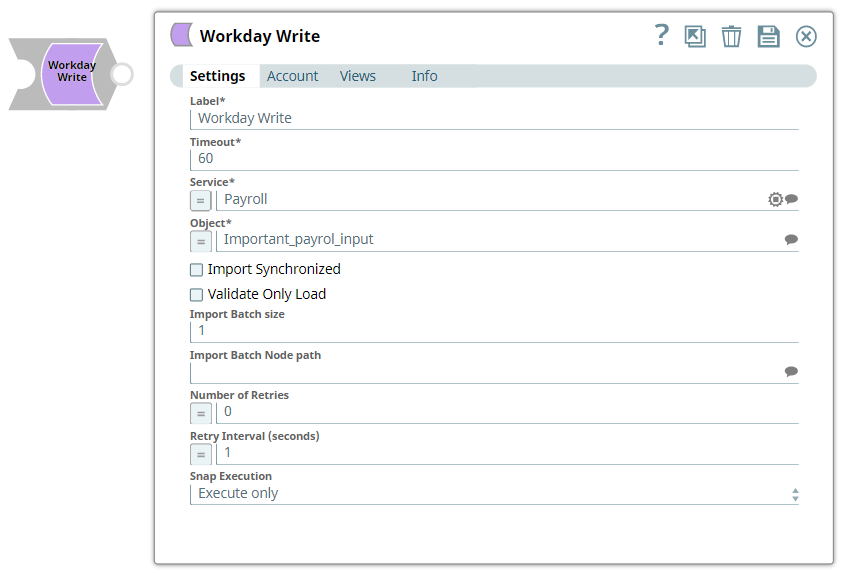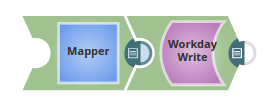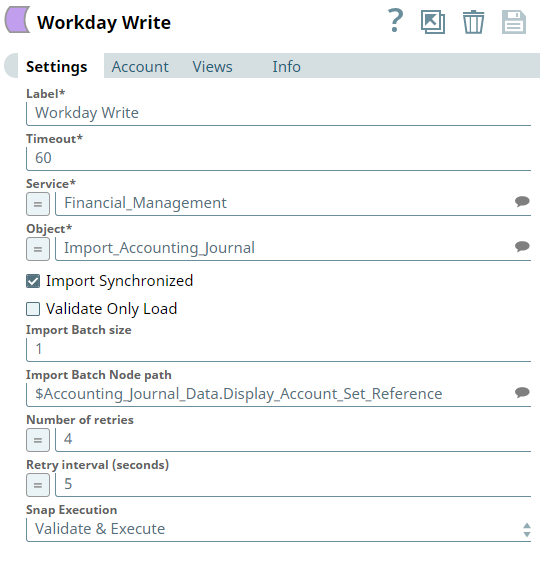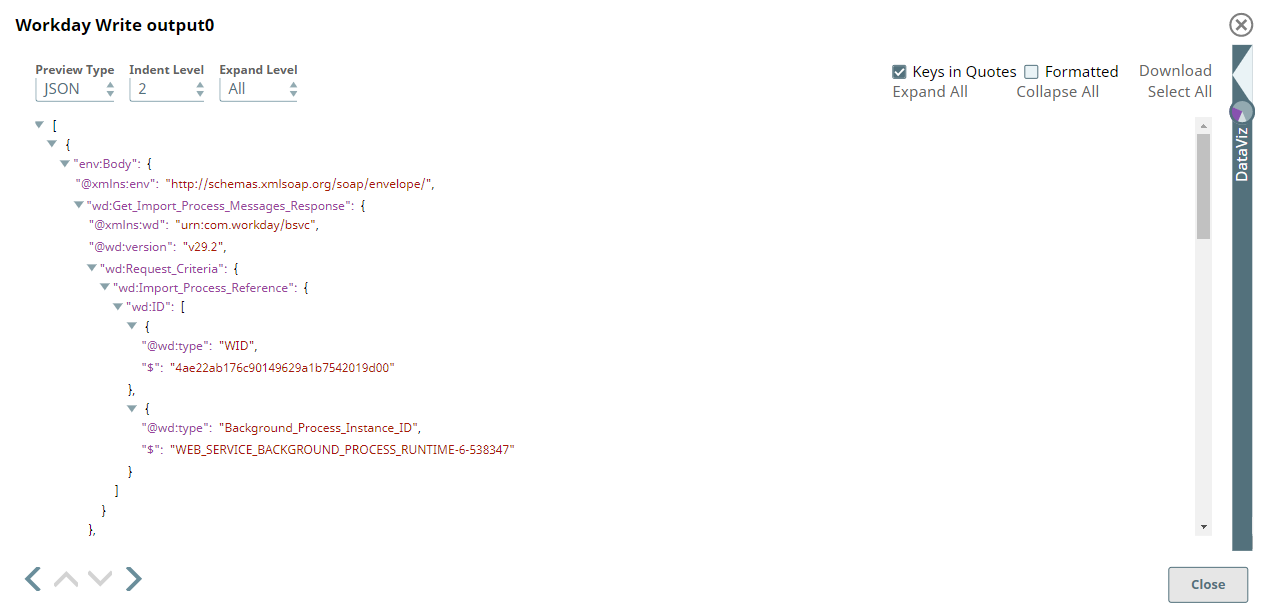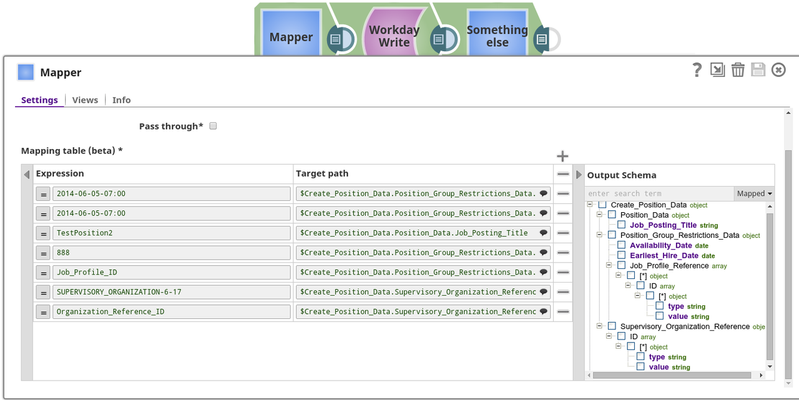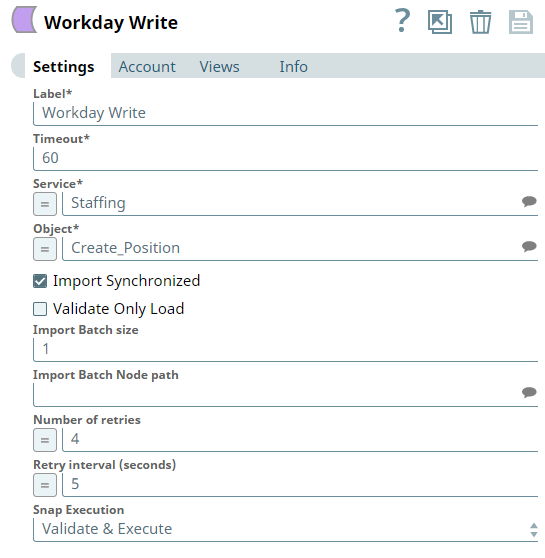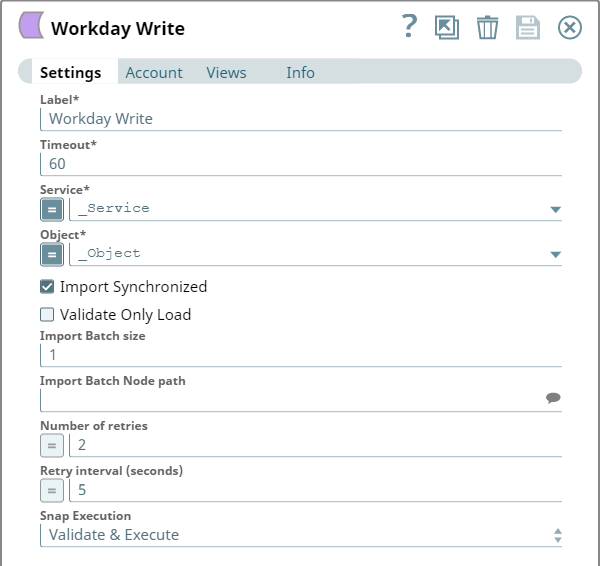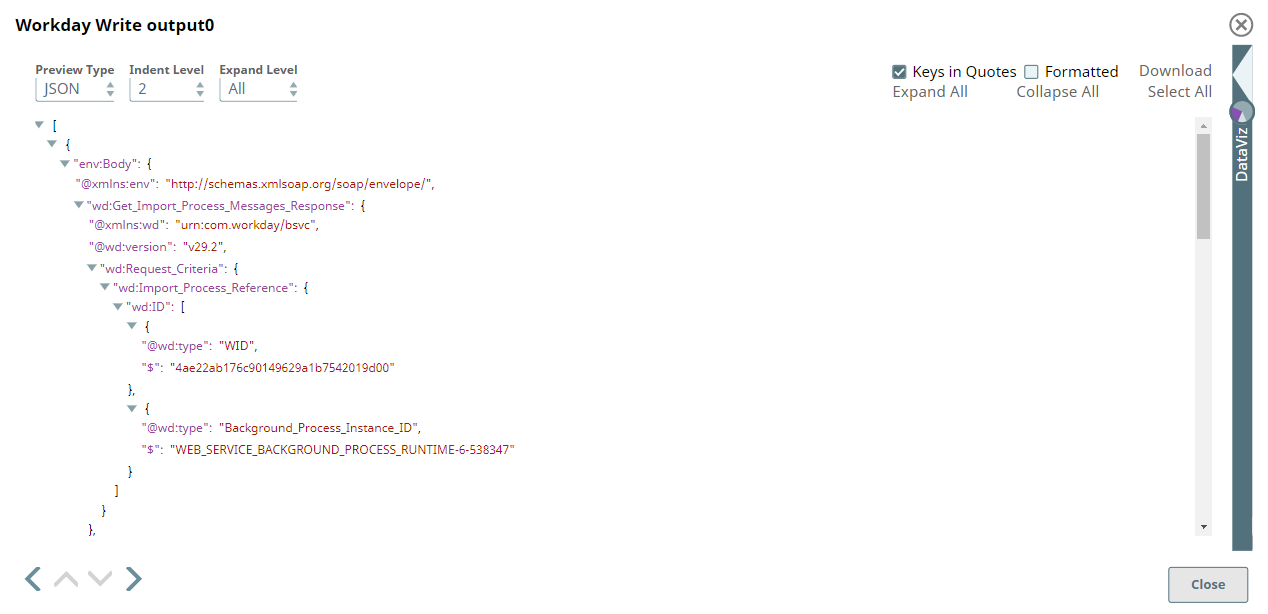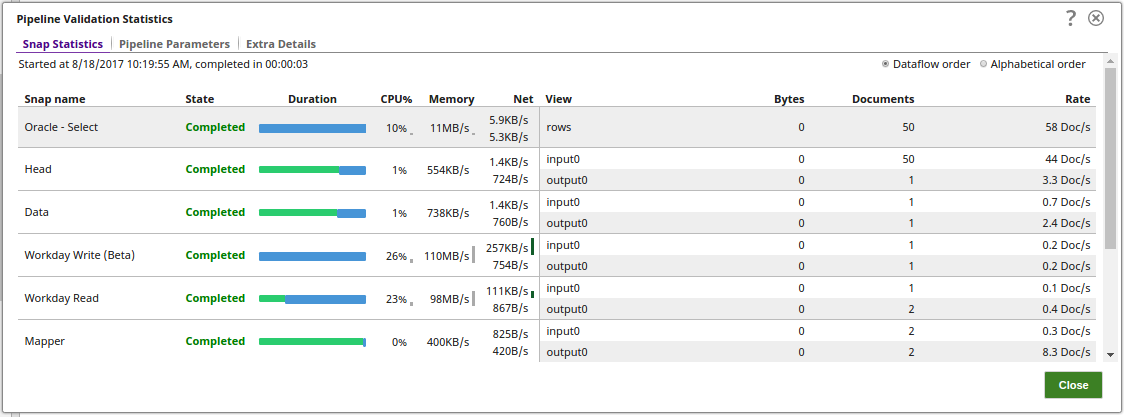In this article
| Table of Contents | ||||
|---|---|---|---|---|
|
Overview
Workday Write Snap is a Write-type Snap that you can use to write objects into Workday based on the input document field values that match the Workday object schema field names as defined by the Workday Web Service Definition Language (WSDL). The object becomes suggestible once the account is defined. The fields that can be set on the object are provided on the input view of the Snap and can be mapped using an upstream Mapper Snap.
Workday provides documentation for their objects at https://community.workday.com/custom/developer/API/index.html
| Info |
|---|
ETL Transformations & Data FlowThis Snap enables the following ETL operations/flows:
This Snap creates a SOAP request based upon the Workday Write object input schema and the input data passed into the Snap. The Snap then submits the SOAP request to Workday and converts the Workday SOAP XML response to JSON in the output view.
|
Prerequisites
- You must have a Workday Account, data to query, and Workday security access to the objects. Contact your organization's Workday Security Administrator for proper access.
- Workday recommends using an Integration System User (Most commonly known as ISU) for use with APIs.
Support and limitations
Works in Ultra Task Pipelines.
Snap Views
| Type | Format | Number of Views | Examples of Upstream and Downstream Snaps | Description |
|---|---|---|---|---|
| Input | Document | Min: 1 Max: 1 |
| The document conforms to the input view schema of the Snap. The input view schema is provided to an upstream Mapper Snap based on the selected service object. |
| Output | Document | Min: 1 Max: 1 |
| Each record is represented as one document on the output view. The document represents the record structure of the retrieved Workday service object. |
| Error | Error handling is a generic way to handle errors without losing data or failing the Snap execution. You can handle the errors that the Snap might encounter while running the Pipeline by choosing one of the following options from the When errors occur list under the Views tab. The available options are:
Learn more about Error handling in Pipelines. | |||
Settings
| Info |
|---|
|
| Field | Description | ||||||
|---|---|---|---|---|---|---|---|
Label* | The name for the Snap. You can modify this to be more specific, especially if you have more than one of the same Snap in your Pipeline. | ||||||
| Timeout | Defines the timeout value for each Workday SOAP request. A value of 0 means no timeout. Default Value: 60 | ||||||
| Service | The service to be used. Though all available services are selectable, only Resource_Management, Revenue_Management, Financial_Management, Integrations, Cash_Management may have objects that provide cancellations. Default Value: N/A [None] | ||||||
| Object* | The object to write. The field is suggestible once the account is defined. The objects will be suggested based on the selected service, such as selecting the service Payroll will retrieve all objects for Payroll that are retrievable from Workday. Default Value: N/A[None] | ||||||
| Import Synchronized | Select this checkbox to use synchronous import. In a synchronized import, the current import request must complete before the next request can be initiated. In an asynchronous import, the next import request can be initiated immediately upon current request submission. Default Value: Not selected | ||||||
| Validate Only Load | Select this check box while working with import objects. This enables the Snap to upload processed data for validation without importing it into the endpoint. Once an authorized user review and validates the uploaded data, deselect this check box and execute the Pipeline to update the actual records in the endpoint.
Default Value: Not selected | ||||||
| Import Batch size | The number of documents to be batched together as a single request. This also requires "Import Batch Node path" property.(This is only for Import_ objects and doesn't affect other objects) Default Value: 1 | ||||||
| Import Batch Node path | The node path of the soap message under which the documents need to be batched. The suggested option accesses schema on its input view or through an upstream reference.
Default Value: N/A | ||||||
| Number of Retries | Enter the integer value to specify the number of attempts the snap should make to perform the selected operation in case of connection failure or timeout. Minimum value: 0 Default Value: 0 | ||||||
| Retry Intervals (seconds) | Enter the time interval in seconds between retry attempts. Minimum value: 1 Default Value: 1 | ||||||
Snap Execution |
|
Troubleshooting
Ensure that the capitalization of the keys in the input document matches the capitalization of the WSDL elements. If the upstream source does not use the same case for some reason, a Mapper can be used to handle the conversion as a workaround.
| Multiexcerpt include macro | ||||
|---|---|---|---|---|
|
Basic Use Cases
The below examples display how the Snap functions in a Pipeline:
| Note |
|---|
You must have a Workday Account, and Workday writes security access to the objects in the following examples. |
| Expand | ||
|---|---|---|
| ||
This pipeline shows how the Workday Write Snap supports the import objects. In this pipeline, the Mapper Snap passes the values to be configured under various parameters for the Object, Import_Accounting_Journal. The Workday Write Snap writes the data from the object, Import_Accounting_Journal. Note the Import Synchronized property is selected with an import batch size of 1. The import Batch node suggests the path under which the documents need to be batched under. Successful execution of the pipeline displays the below output preview: |
| Expand | ||
|---|---|---|
| ||
In the first example, we will create a Position using the Staffing service. We will start with a Mapper Snap where we map the position details such as Availability_Date and Job_Posting_Title.
The Workday Write Snap was configured to use the Staffing service with the Create_Position object. The response is shown below, returning the ID of the position that was created. |
Typical Snap Configurations
The key configuration of the Snap lies in how the statements are passed to write the Workday objects. As it applies in SnapLogic, the statements can be passed in the following manner:
- Without Expression
In this pipeline, the Workday Write Snap writes the objects from a specified Object.
- With Expression
- Pipeline Parameters
In the below pipeline, the Workday Write Snap uses the values as set in the pipeline parameters.
Advanced Use Case
The following describes a pipeline, with a broader business logic involving multiple ETL transformations. Pipeline Attachments links are provided in the Downloads links in the bottom section.
This pipeline reads the documents from the Oracle Database, writes the required documents to the Workday instance, and then reads them.
The ETL transformations
Extract: The Oracle Select Snap retrieves the documents from the Oracle Database.
Transform: The Head Snap is set to retrieve one document to be passed to the Workday instance.
Load: The Mapper Snap maps the input document to the target schema from the Workday service
Load: The Workday Write Snap writes the document to the specified Object on the service.
Read: The Workday Read Snap reads the inserted document on the Workday Object.
Another Advance use case where the documents are created and migrated from the Microsoft CRM instance to the Workday instance.
Downloads
| Attachments | ||
|---|---|---|
|
